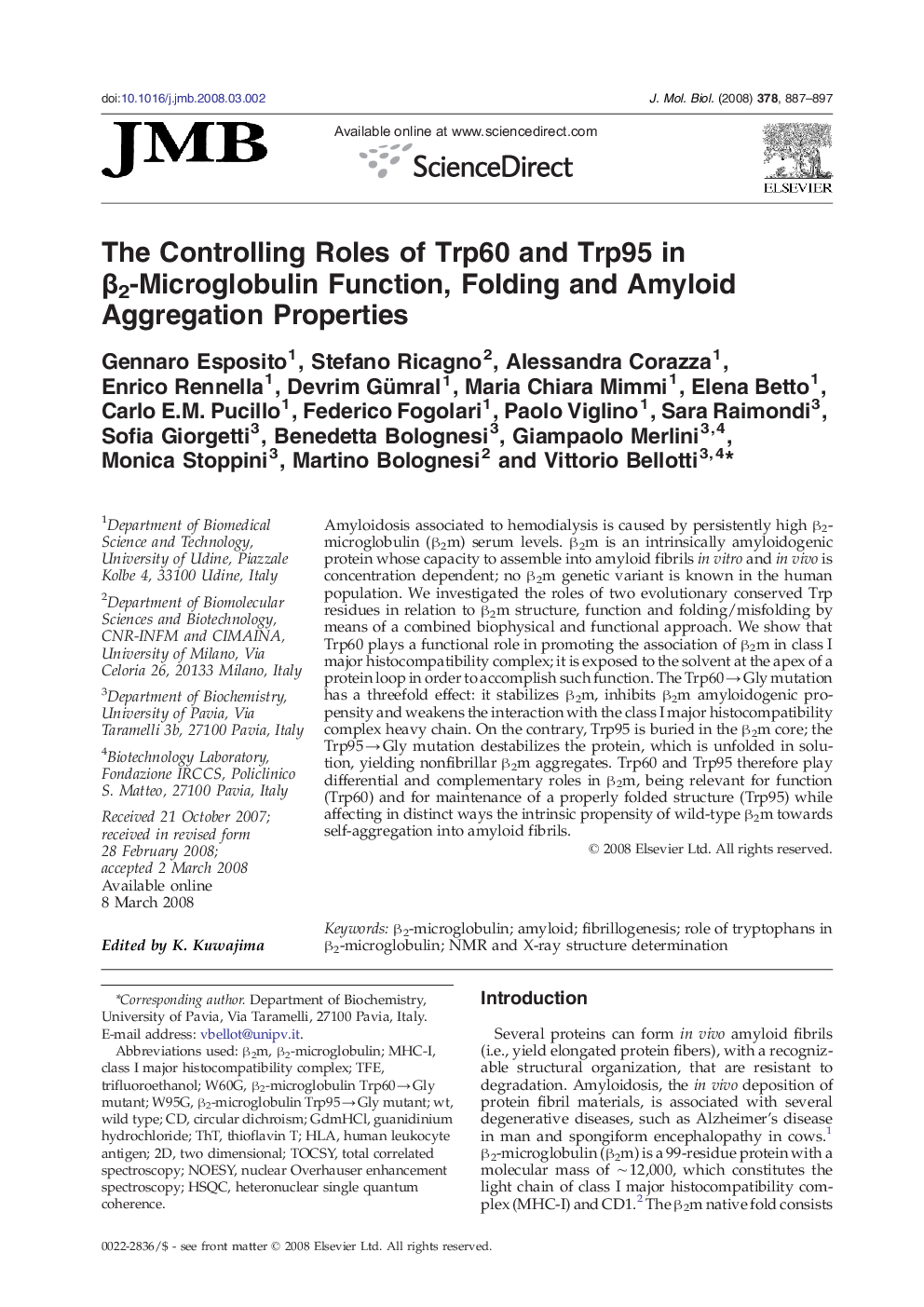| Article ID | Journal | Published Year | Pages | File Type |
|---|---|---|---|---|
| 2187395 | Journal of Molecular Biology | 2008 | 11 Pages |
Amyloidosis associated to hemodialysis is caused by persistently high β2-microglobulin (β2m) serum levels. β2m is an intrinsically amyloidogenic protein whose capacity to assemble into amyloid fibrils in vitro and in vivo is concentration dependent; no β2m genetic variant is known in the human population. We investigated the roles of two evolutionary conserved Trp residues in relation to β2m structure, function and folding/misfolding by means of a combined biophysical and functional approach. We show that Trp60 plays a functional role in promoting the association of β2m in class I major histocompatibility complex; it is exposed to the solvent at the apex of a protein loop in order to accomplish such function. The Trp60 → Gly mutation has a threefold effect: it stabilizes β2m, inhibits β2m amyloidogenic propensity and weakens the interaction with the class I major histocompatibility complex heavy chain. On the contrary, Trp95 is buried in the β2m core; the Trp95 → Gly mutation destabilizes the protein, which is unfolded in solution, yielding nonfibrillar β2m aggregates. Trp60 and Trp95 therefore play differential and complementary roles in β2m, being relevant for function (Trp60) and for maintenance of a properly folded structure (Trp95) while affecting in distinct ways the intrinsic propensity of wild-type β2m towards self-aggregation into amyloid fibrils.
